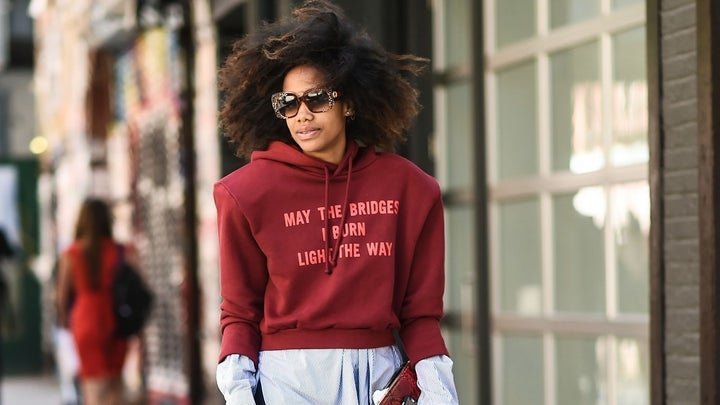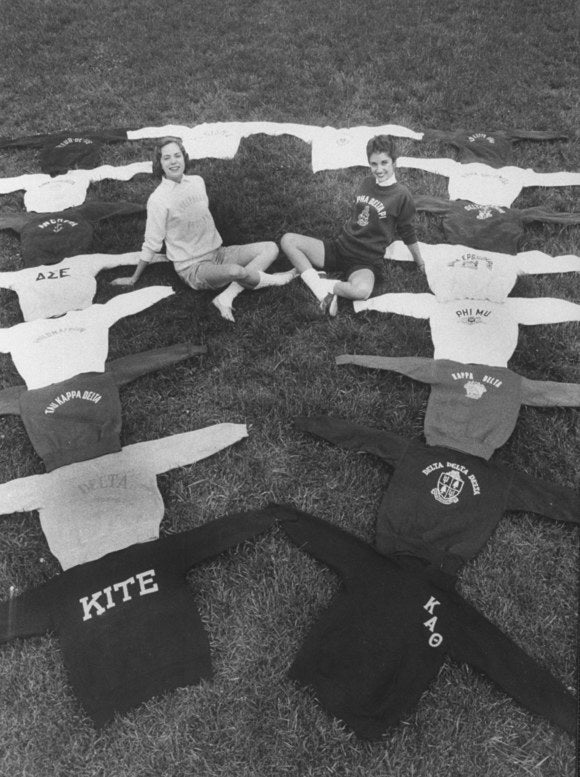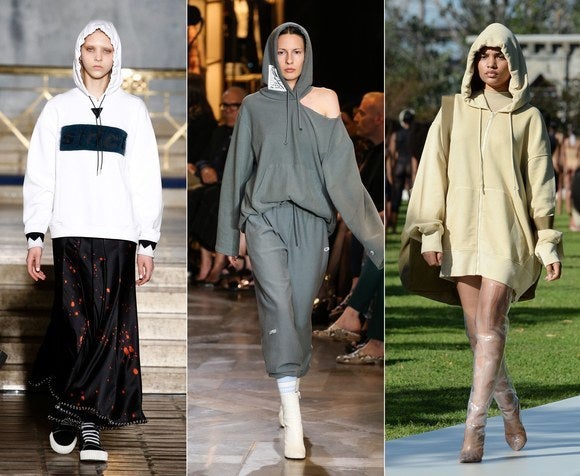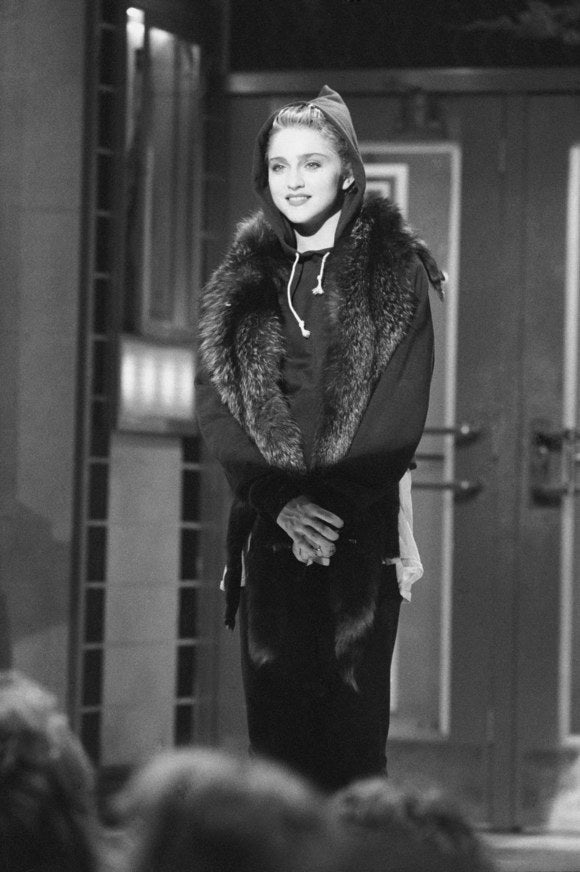For Allure, by Macaela Mackenzie.

The hoodie is not only the most important item of clothing in your closet on DGAF days, but it’s a pretty important piece of clothing in our collective cultural history. Seriously. While we were busy writing the hoodie off as an innocuous sweatshirt to be reserved for post-gym brunches or shameless evenings of Netflix and chill, it was subverting its way right into the fabric of our cultural consciousness. We don’t often think of clothing as having an agenda, but the hoodie definitely does.
“Most people see the hoodie as the representation of anything anti-social,” says Laura McLaws Helms, a New York–based fashion historian. “It’s this anti-establishment, anti-social thing, and probably the ultimate garment that represents those ideas.”
The hoodie has what you might call a paradoxical history. When it first hit the retail scene in the ’30s, the hoodie had a pretty practical intent: keeping athletes warm, a purpose that was quickly appropriated by blue-collar laborers. But not too long after its vanilla beginnings, the hoodie started to get a rep on the streets. According to McLaws Helms, this, too, was purely practical — the hood provided the perfect shroud for ne’er-do-wells up to no good. From there it really took off. In the ‘70s, the hoodie solidified its counterculture rep, largely thanks to the army of graffiti artists sporting the style as they left their marks on major urban centers. In rapid succession came the hip-hop crowd and the skater scene of the ‘80s and ‘90s — two more countercultures borrowing the uniform of their predecessors.

Sweatshirts on display in the ’50s.
For a brief second, it looked like the hoodie might swing back toward its squeaky-clean roots, says McLaws Helms. “The hoodie has had this other tread that’s all about leisurewear and resort wear,” she says. “You can go through old issues of WWD and Vogue from the ’70s, and it’s all pictures of pretty blondes on the tennis court wearing hoodie sweatshirts.” It provides an interesting commonality between the country club set and some of the era’s most relevant counterculture movements.
But the hoodie held down its street cred heading into the 21st century, when it was adopted by the early recluses who pioneered Silicon Valley — most notably, Facebook’s Mark Zuckerberg.
Which brings us to the latest incarnation of the hoodie. In an almost poetically perfect throwback, the athleisure trend has taken the preppy hoodie of the ‘70s country club set and the humble uniform of the 1930s football star and married the two. But there’s also a much more ironic trend happening with the modern sweatshirt. As the street-style trend has moved away from the fringes of fashion into the mainstream, so has the most authentic piece of street-style wear. All of a sudden, labels like Supreme, Vetements, and Yeezy are slapping three- and four-figure price tags on oversize versions of the uniform of graffiti artists and tech nerds in a kind of modern-day counterculture move that might have you scratching your head.

From left: Alexander Wang, Vetements, Yeezy
Throughout all of these different incarnations the hoodie has had throughout history, there’s been one common thread in its narrative: subversion. “The hoodie has been inserting itself into some of the biggest cultural conversations of the past century, and we’re only just now starting to pay attention. That’s part of why designers like Kanye West and Vetements are drawing on that history. They have hoodies in their collections because it has such a strong cultural background,” says McLaws Helms. “For any designer, when you take something from history, even if it’s just contemporary history, it’s always going to come with a certain amount of cultural connotation.”
Herein lies the hoodie’s genius. It’s managed to pass through some of the most important counterculture movements of our time, only to end up right in the focal point of high-end trend watchers. With one simple item of clothing, modern designers are referencing not only a broad-spectrum history of youth culture, but also a very relevant political conversation.
“With one simple item of clothing, modern designers are referencing not only a broad-spectrum history of youth culture, but also a very relevant political conversation.”

Madonna wearing a hoodie on the set ofSaturday Night Live in 1985.
So what gives a simple item of clothing that kind of power? It starts with the form and then becomes about the narrative that we, as a culture, write around it — what started out as a totally functional way to keep high school athletes warm became one of the most potent symbols of subversion. The crazy thing is just how much narrative power the hoodie has managed to garner over the past century. “For such an omnipresent garment and such a common thing, it’s really unlike any other piece of clothing in terms of the amount of stories people have about it,” says McLaws Helms.
The hoodie now has such cultural cache that it’s become prescriptive — when you see one in the wild, you start filling in the narrative about it’s wearer. Take for example the Black Lives Matter movement, which sprang from the murder of Trayvon Martin and the huge amount of time the court spent discussing the role his hoodie might have played in his death. The hoodie rose to such importance in that case, that many attributed Martin’s death to his clothing choice that day.
If history is any indication, the hoodie is here to stay — but it won’t be staying quietly.
More from Allure:

